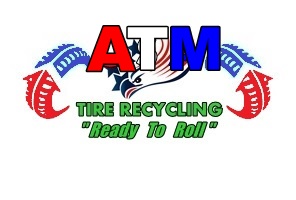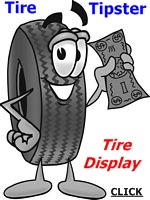|
Reference Guide For Used Tire Exporters from Eastern US Ports
ATM Tire Recycling can offer exporters registered and/or licensed in the United States, documentation services in the following areas for used tire shipments. We have prior experience shipping to the Caribbean, Central America, South America, European States, China and Russia. Call or E-mail us for more information and details. All invoice payments must be made in USD denominations and through a USA based bank. No Credit Cards or Debit Cards will be accepted for payment.
Services Provided
Container loading is included at our North Carolina DC’s with your tire purchase
Container Double Pack or triple pack entails a $0.75 per tire sur-charge
NOTE: Packing large size tires in double and/or triple pack can reduce the estimated amount of tires able to pack in a container
Completed Export Quote requires a $250 pre-paid sur-charge that will be credited back to your account if an order is placed.
Exporter Reference Guide for Shipping Container Dimensions
40 FT. Standard Container Specifications X 850 Tires With No Double Pack
Overall Length 40’ = 12192 mm Width 8’ = 2438 mm Height 8’ 6” = 2591 mm
Internal 39’ 5.25” = 12022 mm Width 7’ 5.625” = 2352 mm Height 7’ 10.25” = 2395 mm
Door Opening 7’ 8.25” = 2343 mm X 7’ 5.75” = 2280 mm
Max. Gross 67200 lbs = 30480 kg
Tare 8600 lbs = 3900 kg
Max. Payload 58600 lbs = 26580 kg
Cube 2392 cu. ft. = 67.7 m3
40 FT. “High Cube” Container Specifications X 1000 Tires With No Double Pack
Overall Length 40' = 12192 mm Width 8' = 2438 mm Height 9' 6" = 2895 mm
Internal 39' 3.25"= 12022 mm Width 7' 8.5" = 2352 mm Height 8' 10.25" = 2700 mm
Door Opening 7' 5.75" = 2340 mm X 8' 5.75" = 2585 mm
Max. Gross 67200 lbs = 30480 kg
Tare 9150 lbs = 4150 kg
Max. Payload 58050 lbs = 26330 kg
Cube 2697 cu. ft. = 76.4 m3
20 FT. Standard Container Specifications X 400 Tires With No Double Pack
Overall Length 20' = 6096 mm Width 7' 9.25" = 2370 mm Height 8'6" = 2591 mm
Internal 19' 5.75" = 5935 mm Width 7' 8" = 2335 mm Height 7' 9.75" = 2383 mm
Door Opening 7' 8" = 2335 mm X 7' 6.25" = 2292 mm
Max. Gross 52910 lbs = 24000 kg
Tare 4585 lbs = 8080 kg
Max. Payload 48325 lbs = 21920 kg
Cube 1197.25 cu. ft. = 33.9 m3
Authorized agent
An individual or legal entity physically located in or otherwise under the jurisdiction of the United States that has obtained power of attorney or written authorization from a USPPI or FPPI to act on its behalf, and for purposes of this part, to complete and file the EEI.
AES Applicant
The USPPI or authorized agent who applies to the Census Bureau for authorization to report export information electronically to the AES, or through AES Direct or its related applications.
AESDirect
A free Internet application supported by the U.S. Census Bureau that allows USPPI's, their authorized agent, or the authorized agent of the FPPI to transmit EEI through the AES via the Internet at AES Direct.
Annotation
An explanatory note (e.g., proof of filing citation, postdeparture filing citation, AES downtime filing citation, exemption, or exclusion legend) placed on the bill of lading, air waybill, export shipping instructions, or other loading documents.
Automated Export System (AES)
The electronic system, including AESDirect, for collecting export information that was previously captured on the Shipper's Export Declaration.
Bill of lading (BL)
A document that establishes the terms of a contract between a shipper and a transportation company under which freight is to be moved between specified points for a specified charge. Usually prepared by the authorized agent on forms issued by the carrier, it serves as a document of title, a contract of carriage, and a receipt for goods.
Bond
An instrument used by CBP as security to ensure the payment of duties, taxes and fees and/or compliance with certain requirements such as the submission of manifest information.
Bonded Warehouse
An approved private warehouse used for the storage of goods until duties or taxes are paid and the goods are properly released by CBP. Bonds must be posted by the warehouse proprietor and by the importer to indemnify the government if the goods are released improperly. Goods entering a bonded warehouse are included in General Imports but not Imports for Consumption. They are considered Imports for Consumption when they leave the bonded warehouse for domestic consumption.
Booking
A reservation made with a carrier for a shipment of goods on a specific voyage, flight, truck or train.
Carrier
An individual or legal entity in the business of transporting passengers or goods. Airlines, trucking companies, railroad companies, shipping lines, pipeline companies, and slot charterers are all examples of carriers.
Container
A uniform, reusable metal "box" in which goods are shipped by vessel, truck, or rail as defined in the International Convention for Safe Containers, as amended (TIAS 9037; 29 U.S.T. 3709).
Customs broker
An individual or entity licensed to enter and clear imported goods through CBP for another individual or entity.
Customs Value
The Customs value is the value of imports as appraised by the U.S. Customs and Border Protection in accordance with the legal requirements of the Tariff Act of 1930, as amended. This value is generally defined as the price actually paid or payable for merchandise when sold for exportation to the United States, excluding U.S. import duties, freight, insurance, and other charges incurred in bringing the merchandise to the United States. The term "price actually paid or payable" means the total payment (whether direct or indirect, and exclusive of any costs, charges, or expenses incurred for transportation, insurance, and related services incident to the international shipment of the merchandise from the country of exportation to the place of importation in the United States) made, or to be made, for imported merchandise by the buyer to, or for the benefit, of the seller. In the case of transactions between related parties, the relationship between buyer and seller should not influence the Customs value. In those instances where assistance was furnished to a foreign manufacturer for use in producing an article which is imported into the United States, the value of the assistance is required to be included in the value reported for the merchandise. Such "assists" include both tangible and intangible assistance, such as machinery, tools, dies and molds, blue prints, copyrights, research and development, and engineering and consulting services. If the value of these "assists" is identified and separately reported, it is subtracted from the value during statistical processing. However, where it is not possible to isolate the value of "assists", they are included. In these cases the unit values may be increased due to the inclusion of such "assists".
District (or port) of Entry
The district (or port) in which merchandise clears Customs for entry into consumption channels, bonded warehouses or Foreign Trade Zones.
District (or port) of Exportation
For vessel or air shipments, the district (or port) in which the merchandise is loaded on the vessel or aircraft which takes the merchandise out of the country. For rail, truck, pipeline, or other overland transportation, the district (or port) through which the merchandise crosses the U.S. border into foreign territory. Aircraft exported under their own power are credited to the district from which they are flown out of the United States.
Domestic Exports
Goods that are grown, produced, or manufactured in the United States, and commodities of foreign origin that have been changed in the United States, including changes made in a U.S. FTZ, from the form in which they were imported, or that have been enhanced in value or improved in condition by further processing or manufacturing in the United States.
Forwarding agent
The person in the United States who is authorized by the principal party in interest to facilitate the movement of the cargo from the United States to the foreign destination and/or prepare and file the required documentation.
Free Along Ship (F.A.S.) Export Value
The value of exports at the U.S. seaport, airport, or border port of export, based on the transaction price, including inland freight, insurance, and other charges incurred in placing the merchandise alongside the carrier at the U.S. port of exportation. The value, as defined, excludes the cost of loading the merchandise aboard the exporting carrier and also excludes freight, insurance, and any charges or transportation costs beyond the port of exportation.
Freight Forwarder
An independent business which handles export shipments for compensation.
Loading document
A document that establishes the terms of a contract between a shipper and a transportation company under which freight is to be moved between points for a specific charge. It is usually prepared by the shipper and actuated by the carrier and serves as a document of title, a contract of carriage, and a receipt for goods. Examples of loading documents include the air waybill, inland bill of lading, ocean bill of lading, and through bill of lading.
Manifest
A collection of documents, including forms, such as the cargo declaration and annotated bills of lading, that lists and describes the cargo contents of a carrier, container, or warehouse. Carriers required to file manifests with the CBP Port Director must include an AES filing citation, or exemption or exclusion legend for all cargo being transported. In general, the shipping manifest is a document in the public domain and can be viewed by anyone.
Method of Transportation (MOT)
The method by which goods are exported from the United States by way of seaports, airports, or land border crossing points. Methods of transportation include vessel, air, truck, rail, container or other. For statistical purposes, methods of transportation are classified as vessel, air, or other.
Origin of Movement (OM)
In 1985, a new field indicating the state where the export journey begins, was added. This field allowed the compilation of the State of Origin of Movement Series. The OM series based on origin state, available since 1987, provides export statistics based on the state from which the merchandise starts its journey to the port of export; that is, the data reflect the transportation origin of exports.
Packing list
A list showing the number and kinds of items being shipped, as well as other information needed for transportation purposes.
Port of export
The seaport or airport where the goods are loaded on the exporting carrier that is taking the goods out of the United States, or the port where exports by overland transportation cross the U.S. border into a foreign country. The port of export shall be reported in terms of Schedule D, "Classification of CBP Districts and Ports." In the case of an export by mail, use port code 8000.
Power of attorney
A legal authorization, in writing, from a USPPI or FPPI stating that the agent has authority to act as the principal party's true and lawful agent for purposes of preparing and filing the EEI in accordance with the laws and regulations of the United States.
Proof of filing citation
A notation placed on the bill of lading, air waybill, export shipping instructions, or other commercial loading documents, usually for carrier use, that provides evidence that the EEI has been filed and accepted in the AES.
Routed export transaction
A transaction in which the FPPI authorizes a U.S. agent to facilitate export of items from the United States on its behalf and prepare and file the EEI.
|





 INFORMATION LINKS
INFORMATION LINKS

